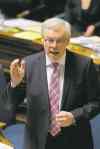What’s left of ‘the left’ in the federal NDP
Advertisement
Read this article for free:
or
Already have an account? Log in here »
To continue reading, please subscribe:
Monthly Digital Subscription
$0 for the first 4 weeks*
- Enjoy unlimited reading on winnipegfreepress.com
- Read the E-Edition, our digital replica newspaper
- Access News Break, our award-winning app
- Play interactive puzzles
*No charge for 4 weeks then price increases to the regular rate of $19.00 plus GST every four weeks. Offer available to new and qualified returning subscribers only. Cancel any time.
Monthly Digital Subscription
$4.75/week*
- Enjoy unlimited reading on winnipegfreepress.com
- Read the E-Edition, our digital replica newspaper
- Access News Break, our award-winning app
- Play interactive puzzles
*Billed as $19 plus GST every four weeks. Cancel any time.
To continue reading, please subscribe:
Add Free Press access to your Brandon Sun subscription for only an additional
$1 for the first 4 weeks*
*Your next subscription payment will increase by $1.00 and you will be charged $16.99 plus GST for four weeks. After four weeks, your payment will increase to $23.99 plus GST every four weeks.
Read unlimited articles for free today:
or
Already have an account? Log in here »
Hey there, time traveller!
This article was published 21/09/2015 (3736 days ago), so information in it may no longer be current.
What’s happened to the notion of the NDP “socialist hordes at the gates”? Where are the policy ideas of the New Democrat party militants and the hard leftists?
Evidently, the brain trust of the NDP has decided to remove from the party’s website a 29-page booklet of party resolutions from previous conventions — including those of a decidedly leftist hue. This follows the cleansing of any references to “socialism” from the preamble to the party’s constitution in April 2013.
I remember a few years ago when Halifax MP, and deputy party leader, Megan Leslie visited the University of P.E.I. to talk to the students of my parties course just before the NDP’s national leadership convention. I distinctly recall the look of incredulity on her face when I asked her if she was concerned about Tom Mulcair’s desire to bring the federal NDP much closer to the centre. It wouldn’t happen, she assured me.
There are, of course, sops to the left of the party via policies on child care, a national minimum wage, and tax increases on corporate Canada. But this is not a traditional NDP agenda of progressive and interventionist policy prescriptions.
Indeed, there’s little doubt that Mulcair has moved the federal party further right than any other leader in its history. He’s even gone further to the right-of-centre than Liberal party Leader Justin Trudeau.
Perhaps there is something to the claim that a much younger Mulcair was, at that time, infatuated with Britain’s Margaret Thatcher and her moves in the early 1980s to implement a right-wing agenda of neo-conservatism (and austerity), to embrace hyper deregulation and privatization and to break the country’s most powerful unions.
On fiscal policy, Mulcair is starting to resemble the budget-balancing, spending-cuts obsession of former Conservative finance minister Jim Flaherty. And he’s also seemingly torn a page from the budget-slashing book of Paul Martin — a former Liberal finance minister and chief architect of deep cuts to Canadian social programs in the mid-1990s. In fact, I’m half expecting Mulcair to say he’ll balance Canada’s federal budget “come hell or high water” any day now.
From a foreign policy standpoint, it also appears the Mulcair-led NDP is taking a harder turn to the right. He is far more willing to endorse comprehensive free trade deals, to back Canada’s needlessly provocative deployment of 200 Royal Canadian Regiment soldiers to Ukraine for training purposes, to hold his powder dry on support for the Palestinian people in the Middle East, and to remain mum on returning Canada to its glorious past (often over-stated) as a peacekeeper.
Moreover, there will be no move to increase Canada’s overseas development assistance budget to 0.7 per cent of GDP — a core NDP promise for decades — in a Mulcair government’s first mandate. There are even reports that Mulcair, in trying to peel away soft Conservative party supporters and business-minded Liberals, is going to promise an increase in Canadian defence spending by some 15 to 20 per cent, pushing the military budget well beyond $20 billion annually. Is Mulcair trying to look more hawkish than the often warrior-sounding Stephen Harper?
There’s no doubt the NDP, arguably closer to 24 Sussex Drive than ever before, is determined to win power by moving substantially to the right of the political spectrum. They are obviously still haunted by the spectre of Bob Rae’s debt-fuelled Ontario provincial government of 1990-1995. The plan, then, is to bullet-proof the party from any charges of being soft on debt reduction (and defence and terrorism), budget surpluses and a much smaller federal government.
More importantly, it’s a strategy premised on one key assumption, namely that those on the left will have little choice but to stick with the union-friendly NDP. He might be right about that.
But what if that doesn’t pan out, and the Liberal vote stays home or those on the left do move to Trudeau’s Liberals? A lot is clearly riding on this right shift — not the least of which is probably Mulcair’s job as party leader.
Peter McKenna is a political science professor at the University of Prince Edward Island in Charlottetown.












